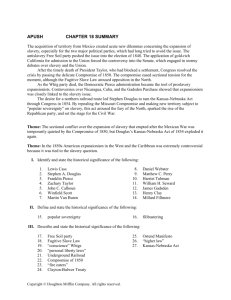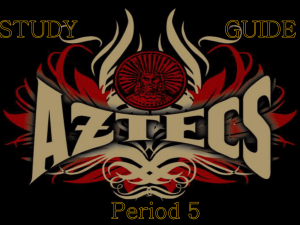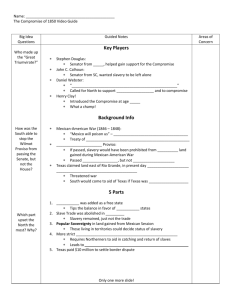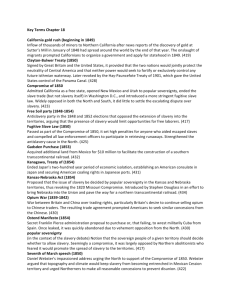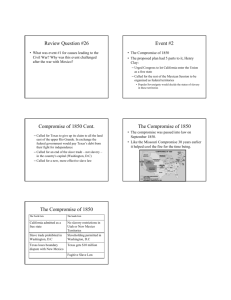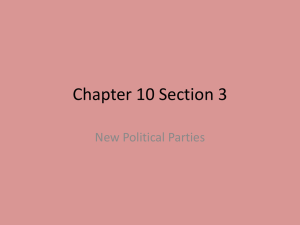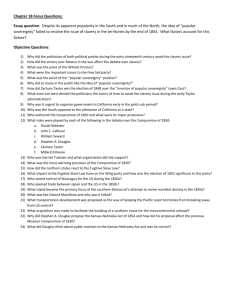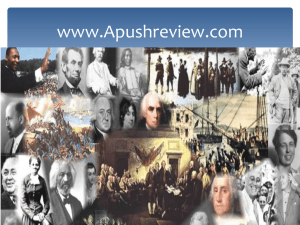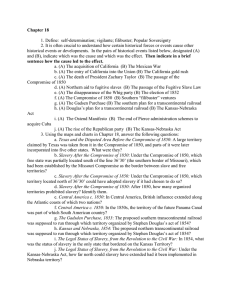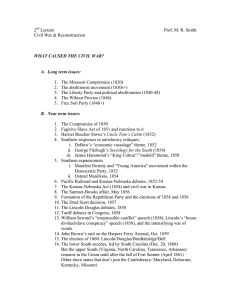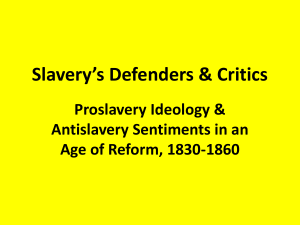United States History
advertisement
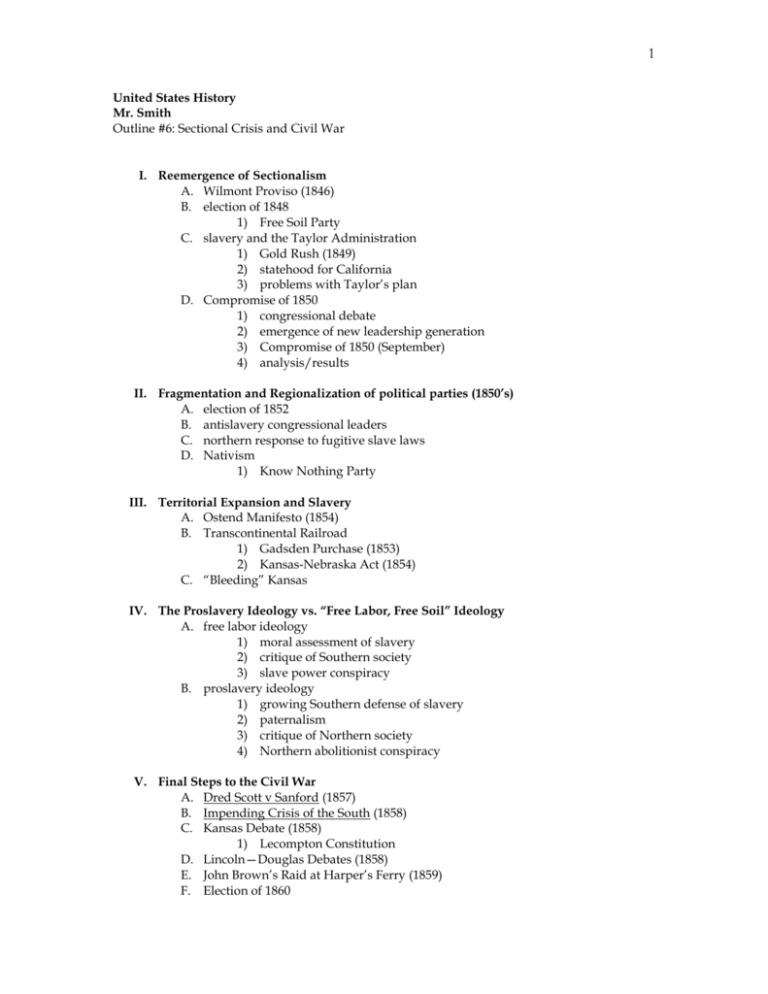
1 United States History Mr. Smith Outline #6: Sectional Crisis and Civil War I. Reemergence of Sectionalism A. Wilmont Proviso (1846) B. election of 1848 1) Free Soil Party C. slavery and the Taylor Administration 1) Gold Rush (1849) 2) statehood for California 3) problems with Taylor’s plan D. Compromise of 1850 1) congressional debate 2) emergence of new leadership generation 3) Compromise of 1850 (September) 4) analysis/results II. Fragmentation and Regionalization of political parties (1850’s) A. election of 1852 B. antislavery congressional leaders C. northern response to fugitive slave laws D. Nativism 1) Know Nothing Party III. Territorial Expansion and Slavery A. Ostend Manifesto (1854) B. Transcontinental Railroad 1) Gadsden Purchase (1853) 2) Kansas-Nebraska Act (1854) C. “Bleeding” Kansas IV. The Proslavery Ideology vs. “Free Labor, Free Soil” Ideology A. free labor ideology 1) moral assessment of slavery 2) critique of Southern society 3) slave power conspiracy B. proslavery ideology 1) growing Southern defense of slavery 2) paternalism 3) critique of Northern society 4) Northern abolitionist conspiracy V. Final Steps to the Civil War A. Dred Scott v Sanford (1857) B. Impending Crisis of the South (1858) C. Kansas Debate (1858) 1) Lecompton Constitution D. Lincoln—Douglas Debates (1858) E. John Brown’s Raid at Harper’s Ferry (1859) F. Election of 1860 2 G. Secession and attempts at compromise 1) Crittenden Compromise (1861) H. What caused the Civil War? VI. The Civil War (1861-1865) A. Beginnings of Armed Conflict 1) Fort Sumter (April 1861) 2) Anaconda strategy 3) First Battle of Bull Run (July 1861) B. Mobilization for War 1) The South 2) The North 3) Military Strategy and Tactics a. The South b. The North i. total war 4) Turning point battles a. Vicksburg b. Gettysburg VII. Wartime Politics A. draft B. land-grant colleges C. Homestead Act (1862) D. transcontinental railroad E. expansion of presidential power i. “domestic insurrection” ii. expansion of armed forces iii. naval blockade iv. suppression of opposition VIII. Politics of Emancipation A. 2nd Confiscation Act (July 1862) B. Emancipation Proclamation (Jan. 1863) C. Sherman’s Special Field Order #15 D. 13th Amendment (1865) IX. Results of the War A. social B. political C. economic D. cultural
